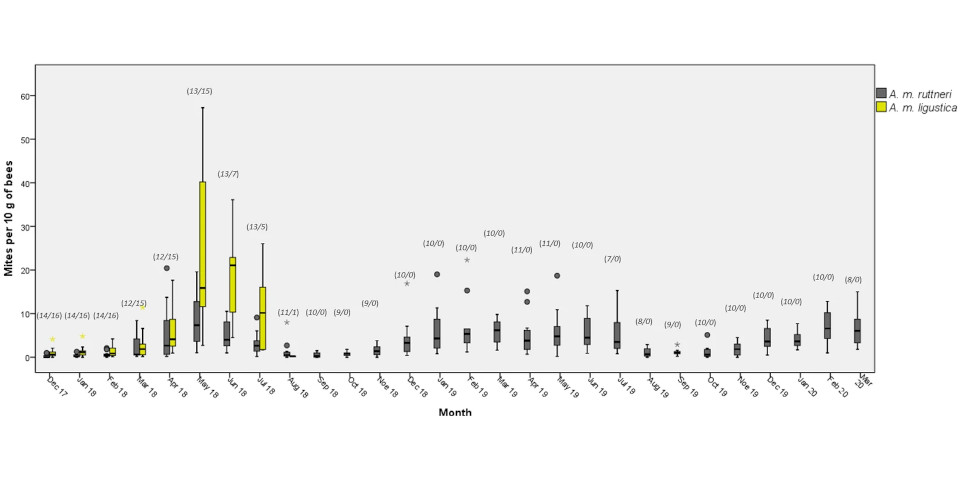The tiny population of the endemic Maltese honey bee (A. m. ruttneri) is threatened by anthropogenic influences, such as urbanisation, habitat loss, and unsustainable agricultural practices, but most prominently by the importation of commercially important non-native stock. To obtain data on the colony life cycle parameters of A. m. ruttneri and to measure its apicultural performance in relation to imported A. m. ligustica under Maltese conditions, we conducted a comparative study between mid-2017 and early 2020. Over one full season, colonies of both subspecies (A. m. ruttneri (n = 15) vs. A. m. ligustica (n = 18)) were regularly assessed for survival, colony size, behaviour, and presence of diseases. The comparative assessments were completed in September 2018, but monitoring and sampling of the surviving colonies of A. m. ruttneri continued until March 2020. Our results clearly indicate that the tested group of sister queens of A. m. ruttneri is well adapted to the prevailing environmental conditions in Malta. The colonies survived significantly longer compared to the tested group of sister queens of A. m. ligustica and performed better in several parameters measured, their colony development, and health being well in tune with the environment. A. m. ruttneri received acceptable scores for behavioural traits (gentleness and calmness on the comb), showing potential for improvement by breeding. The results from this pioneering study clearly indicate that A. m. ruttneri, with its superior adaptation to Maltese conditions and the potential to improve by breeding, represents a prime option towards economically sound beekeeping on the Maltese archipelago.
Development, behaviour, productivity, and health status of the native honey bee Apis mellifera ruttneri vs. the introduced A. m. ligustica in Malta
You are here:







